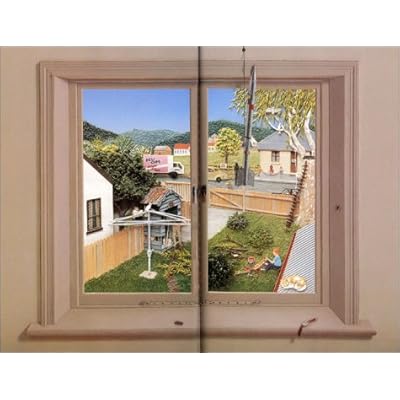
Summary: This moving picture book offers a shining testament to the ability of human beings to find "something beautiful" in even the most unlikely places. An African American girl initially sees only the ugliness of her neighborhood. There is "trash in the courtyard and a broken bottle that looks like fallen stars." On her front door, someone has scrawled the word "DIE," and a homeless lady "sleeps on the sidewalk, wrapped in plastic." Searching for something beautiful?"something that when you have it, your heart is happy"?she polls various neighbors. For an old man it is the touch of a smooth stone; for Miss Delphine, it's the taste of the fried fish sandwich in her diner; for Aunt Carolyn, it's the sound of her baby's laugh. When the girl decides to create her own "something beautiful," she picks up the trash, scrubs her door clean and realizes, "I feel powerful." Wyeth's (Always My Dad) restrained text is thoughtful without being didactic. She creates a city landscape that is neither too dark nor too sweet; and her ending is just right, with the heroine's mother saying that her daughter is her "something beautiful." Soentpiet's (Peacebound Trains) paintings are luminously lifelike. Whether depicting the girl running past a chain-link fence in a dark alley or Miss Delphine's patrons sitting beneath the rows of glinting glasses, the paintings focus on a community with characters so real, readers can almost feel the sunlight on their faces. All ages. Copyright 1998 Reed Business Information, Inc. --This text refers to the Hardcover edition.
Classroom Implications: This book resonates with urban community members and echos the salient point of community action. It offers a different perspective to preserving our environment by marking the importance of preserving ALL environments. It combines concepts of community organizing, social action and environmentalism. I also like the cover because it implies finding beauty in personal identities, as well as communities. This is an important image for our students to see, view and discuss, especially in regards to how community identity mirrors personal identity.
Purchase














































